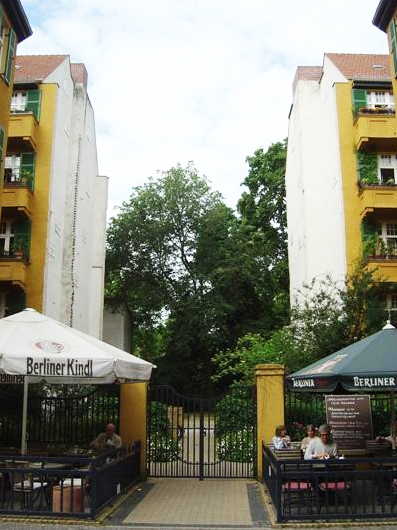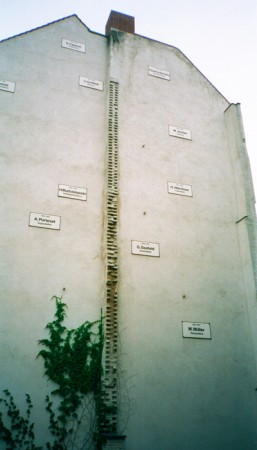Did you ever see the movie “Damn Yankees” where Tab Hunter is this aging Washington Senator’s fan who makes a Faustian bargain with the devil to be transformed into a handsome, charismatic young ballplayer who will help his team conquer the world (or, at least, the New York Yankees)?
Berlin, it seems to me, is Tab Hunter. There is no more youthful city in all of Europe, yet strip off the uniform and you’ll find a contemplative old guy who wonders if the trade-off between youth and experience is really worth it.
I have been noticing as I walk around that everywhere you look in Berlin—the music, the art, the architecture—you see youth. But there is an emotional patina cast upon it that comes from the city’s storied past.
Yesterday I was taking in the sights in the eastern part of the city in a neighborhood called Scheunenviertel (Barn Quarter). Once the center of Berlin’s Jewish community back in the 1920s when it attracted the same sort of artists and writers as Paris, today it is one of the most fashionable sections of the city, full of trendy restaurants, grand homes, and cutting-edge art galleries.
So I’m wandering up one little street and down another, just completely digging the scene and thinking how vibrant and young the whole place feels—you know, admiring Tab Hunter—when I come across this vacant lot between a couple of gentrified apartment buildings just a block or so off the main drag, Oranienburger Strasse. What catches my attention are the simple black-and-white plaques stuck on the wall facing the vacant lot. There are names on them as well as dates and professions—masseuse, actress, sales lady, piano teacher, wood trader, hairdresser.
I ask a young woman sitting outside at the café in front of the vacant lot what the deal is with the plaques. She tells me that this is a sort of art installation by the French artist Christian Boltanski called “The Missing House.”
There was an apartment building here, she says, and it was destroyed by bombing towards the end of World War II. “The artist, he researched who had lived in this apartment. The plaques record the family names and occupations of the residents, all of whom were either maimed or killed.”
And so, you see, no matter how you dress up der Neue Berlin, underneath the youthful façade you will always find the old Berlin waiting to haunt you.



Recent Comments